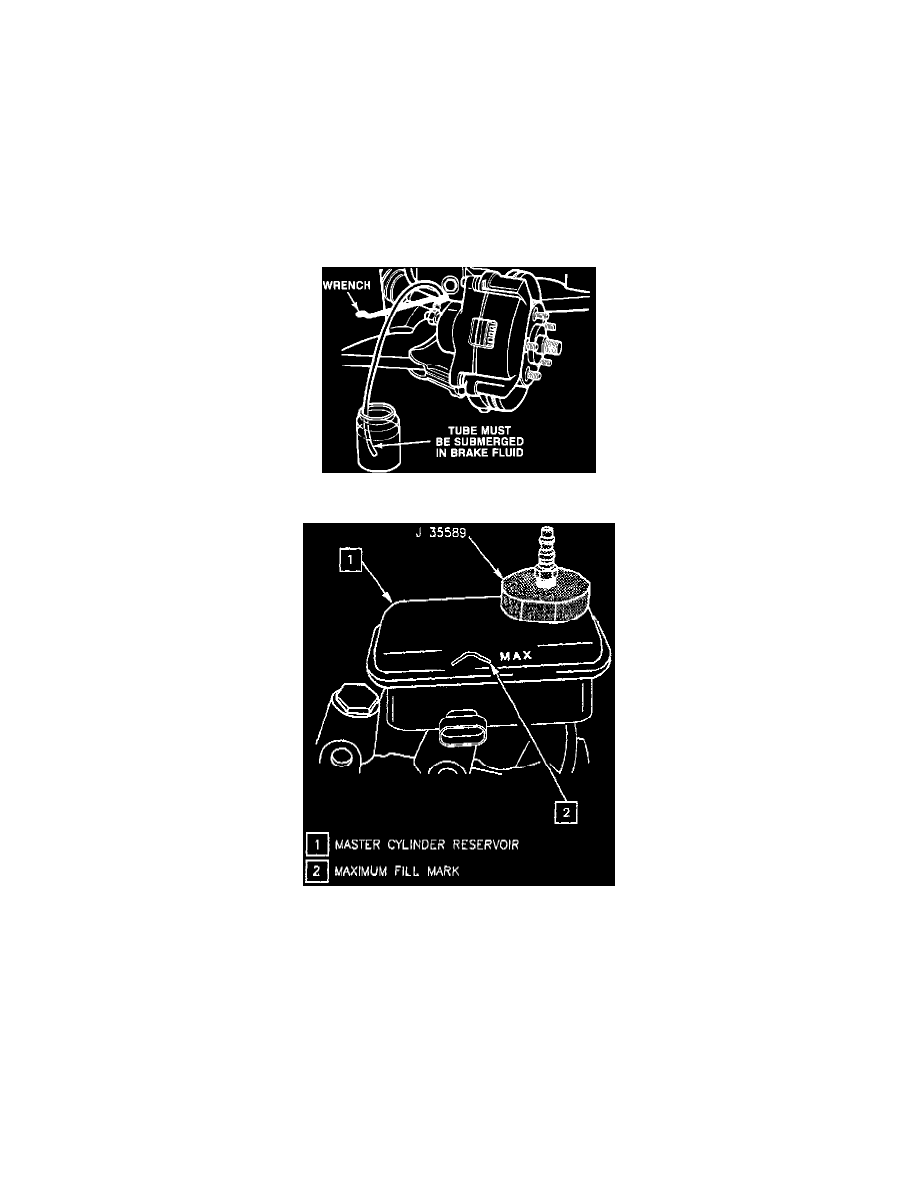Fleetwood FWD V8-300 4.9L (1993)

Brake Bleeding: Service and Repair
Pressure Bleeding
BLEEDING BRAKE HYDRAULIC SYSTEM
CAUTION: Do not move the vehicle until a firm brake pedal is obtained. Air in the brake system can cause loss of brakes with possible injury.
A bleeding operation is necessary to remove air from the hydraulic brake system whenever air is introduced into the system.
It may be necessary to bleed the hydraulic system at all four brakes when air has been introduced through a low fluid level condition, or the brake pipes
were disconnected at the master cylinder. When a brake pipe is disconnected at one wheel, only that wheel cylinder/caliper needs to be bled. When pipes
are disconnected at any fitting located between the master cylinder and brakes, then the brake system served by the disconnected pipe must be bled.
PRESSURE BLEEDING
Fig. 1 Wheel Cylinder Bleeding
Pressure Bleeding Adaptor
NOTICE: Pressure bleeding equipment must be of the diaphragm type. It must have a rubber diaphragm between the air supply and the brake fluid to
prevent air, moisture, oil and other contaminants from entering the hydraulic system.
IMPORTANT: The correct master cylinder bleeder adapter must be used to avoid possible damage to the master cylinder reservoirs.
TOOLS REQUIRED:
^
J 21472 Brake Bleeder Wrench
^
J 29532 Diaphragm Type Brake Bleeder
^
J 35589 Compact Brake Bleeder Adapter
^
J 28434 Wheel Cylinder Bleeder Wrench
1. Fill master cylinder reservoir to proper level.
